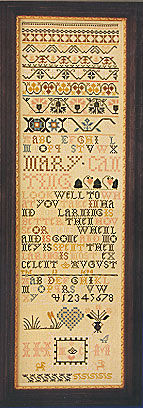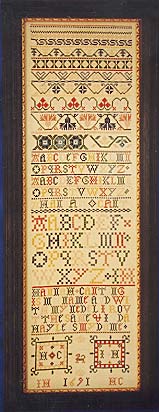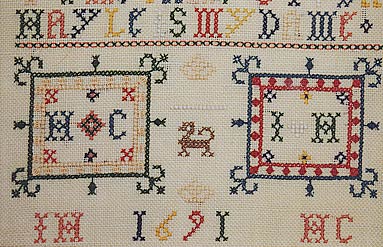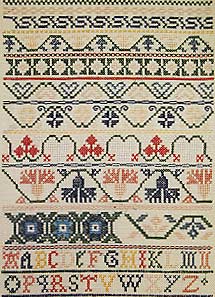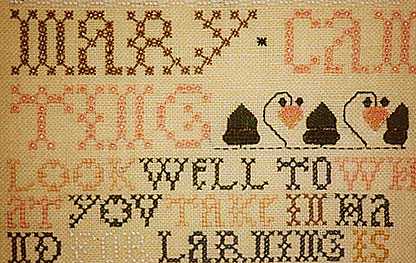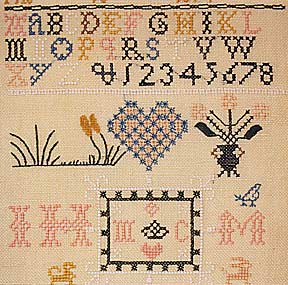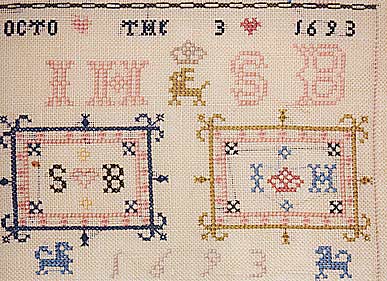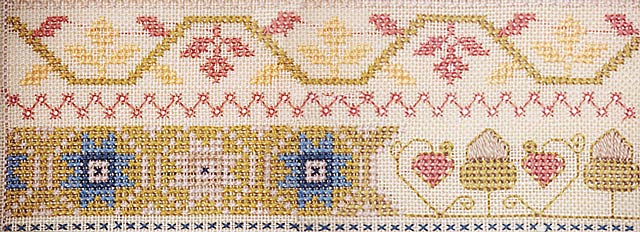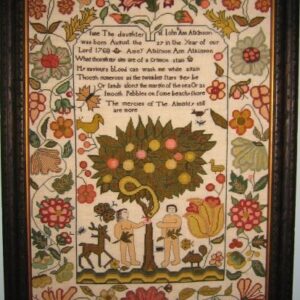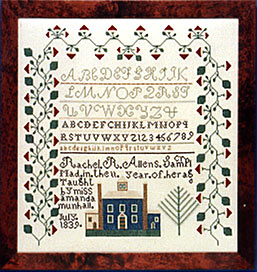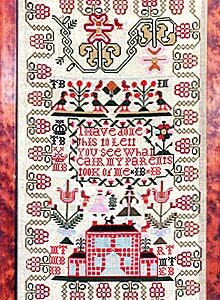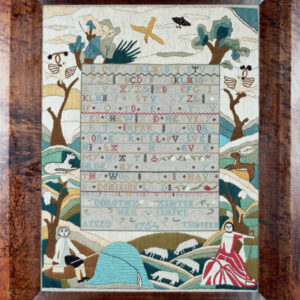Three Late 17th Century Band Samplers from the School of Juda Hayle
From: $28.00
Origin and date: England, 1691 to 1695
Rated: Intermediate
Linen count and finished size: 30-count linen, finished sizes vary from 6″x21-1/4 to 6″x22″
Stitches: Double running, eyelet, back, counted satin, tent, trellis, half cross, queen, and stem
Source: The Fitzwilliam Museum in Cambridge, England
Description
Eleven extant samplers dating from 1691 to 1710 have been assigned to the school of instructress Juda (aka luda/ludeth) Hayle. The samplers share many similar characteristics apart from naming Ms. Hayle as their teacher: in fact some are nearly identical. In chronological order, documented examples include:
- Three samplers from the earliest date (1691), two of which were made by Elizabeth Meadow and Hannah Canting (the third example is in the Museum of London);
- Sarah Bantoft’s of 1693;
- Mary Canting’s of 1694;
- Ann Holewll’s of 1699;
- Prisca Phillips’ of 1700;
- Elizabeth Searles and Elizabeth Burton’s both of 1701;
- Mary Moyses’s of 1709;
- Elisabeth Goodday’s of 1710.
The samplers of Hannah and Mary Canting, and Sarah Bantoft, are graphed within the Scarlet Letter’s kit package.
As far as seventeenth century samplers go, they are by and large a rather plain body of work. Many display identical (in color and design) horizontal floral and geometric pattern bands, initials and hearts within square cartouches, surmounted by hearts or flanked by pots of flowers.
The same two verses, with varied misspellings, occur on many of the samplers:
FOR LEARNING I S BETTER THAN HOUSE OR LAND
WHEN LAND IS GONE AND MONEY IS SPENT
THEN LEARNING IS MOST EXCELLENT
and
_____________ IS MY NAME AND WITH MY NEEDLE I WROUGHT THE SAME
AND JUDETH HAYLE WAS (IS) MY DAME (MISTRESS)
A few examples (Mary Moyse, Ann Holewll) demonstrate slightly more adventurous use of color and stitches, and are worked on finer linen. Certain letters and numerals are distinctly different from those seen on other contemporary samplers, mostly notably the upper case letters O, A, and G.
The dame’s name appears usually as “Iuda” or ‘ludeth.” Tommy Thompson, author of The ABC of Our Alphabet (London, 1942) writes, in a section of the book entitled “The Latin Alphabet,” that “. . . During the Middle Ages (in minuscule) the j form was derived from the letter i to denote a relative sound as soft g or English y. The two forms i and j were long treated as variations of the same symbol. The graphic separation began roughly in the fifteenth century, but j has only been recognized as an individual letter for about a hundred years.”
The three samplers in this packet all date from the earliest period of Juda Hayle’s tenure, and share remarkably similar color palettes, pattern bands, lettering style, overall size, and use of stitches. Two were made by sisters Hannah and Mary Canting, and the third by Sarah Bantoft, all of whom came from relatively wealthy families in and around Ipswich, approximately sixty miles northeast of London Some of the colors used in these three samplers are so similar that it is likely the pattern bands were taught with the same color palette, but hand-dyeing has caused them to fade and alter at differing rates over the centuries. The colors were matched exactly to those at the front side of the samplers, and the palettes vary slightly from sampler to sampler.
Stitches used in these samplers are cross, double running, eyelet, back, counted satin, tent, trellis, half cross, Queen, and stem. To most closely approximate the size of the originals, they should be stitched on 30 count linen, and are recommended for intermediate level needle workers. The finished sizes are 6″x21-1/4″ (Hannah Canting, left), 6-1/2″x21.8″ (Sarah Bantoft, center), and 6″x22 (Mary Canting, right).
Three Related Band Samplers – English, 1691 (left), 1693 (center), and 1694 (right). Of similar size and format, these samplers are part of a group of samplers linked by the name of the dame or mistress who taught during this period in this case the Juda Hayle School. These samplers are identified by the inscription ‘IUDA”‘or ‘Judeth Hayle’ or the initials ‘IH’. There are even yet several more samplers dating from the beginning of the eighteenth century that all carry the initials ‘IH’ or identical verses and motifs.
Additional information
| Format Options |
|---|

